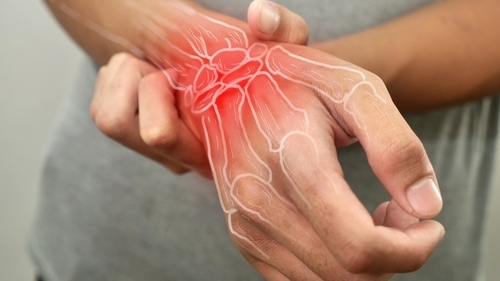Osteoporosis is a condition marked by weakened bones, increasing the risk of fractures. If you or someone you care about has been diagnosed with osteoporosis, understanding the latest treatment guidelines can help manage the condition effectively and minimize fracture risk.

What is Osteoporosis?
Osteoporosis occurs when bone density decreases, resulting in fragile and brittle bones. It is often diagnosed after a fracture, commonly in the hip, spine, or wrist. Making lifestyle changes and using the right medications can help strengthen bones and lower the risk of fractures.¹
1. Lifestyle Changes
While medications are crucial for treating osteoporosis, lifestyle adjustments can significantly enhance bone health. If you are at risk or have already been diagnosed, consider the following modifications:
- Exercise: Engaging in weight-bearing and resistance exercises can improve bone density and maintain muscle strength. Activities like walking, jogging, or resistance training can enhance bone health over time. Balance exercises, such as tai chi, may also reduce the risk of falls and, consequently, fractures.
- Diet: A diet rich in calcium and vitamin D is vital for maintaining bone strength. Incorporate calcium-rich foods like dairy products, leafy greens, and fortified foods. If dietary calcium intake is insufficient, consider supplementation. Vitamin D is essential for calcium absorption, so getting sunlight exposure or consuming vitamin D-rich foods can be beneficial. Supplements may be necessary if your levels are low.
- Avoid Harmful Habits: Smoking and excessive alcohol consumption can adversely affect bone health. Quitting smoking and reducing alcohol intake can help maintain stronger bones and lower the risk of osteoporosis-related fractures.
2. Medications
If lifestyle changes alone are insufficient, medications may be necessary to manage osteoporosis. As of 2024, treatment options have expanded to include more targeted therapies. The appropriate medication will depend on factors such as age, sex, overall health, and the severity of bone loss.
- Bisphosphonates: These remain a common treatment choice, working to slow bone loss and help maintain bone density. They can be taken orally or administered intravenously, depending on individual needs.
- Monoclonal Antibodies: New monoclonal antibody treatments, like Denosumab, inhibit the cells responsible for bone breakdown. Advancements in 2024 have made these treatments more accessible and effective, particularly for those who cannot tolerate other medications.
- Parathyroid Hormone Analogues: For individuals with severe osteoporosis or previous fractures, parathyroid hormone analogues such as teriparatide or abaloparatide may be recommended. These medications stimulate bone formation, potentially increasing bone density over time.
- New Anabolic Agents: Recent advancements have introduced new anabolic agents that help build bone mass and reduce future fracture risk, especially for individuals who have not responded well to other treatments.
3. Emerging Therapies and Technologies
In 2024, ongoing research continues to uncover new therapies and technologies for osteoporosis management. If you’re exploring alternatives to traditional medications, consider the following emerging options:
- Romosozumab: This newer medication is notable for its dual action of promoting bone formation and reducing bone resorption. Administered as a monthly injection, it may be suitable for those who have not had success with other osteoporosis treatments.
- Telehealth and Remote Monitoring: Telehealth has become integral to healthcare, including osteoporosis management. For individuals facing challenges in accessing in-person care, telehealth offers a way to receive follow-ups and treatment adjustments from home. Remote monitoring tools can track changes in bone density and ensure adherence to medication, helping you stay on course with your treatment goals.
4. Fall Prevention Strategies
Preventing falls is crucial for individuals with osteoporosis, as even minor falls can lead to serious fractures. If you are at risk for falls, consider implementing the following strategies:
- Home Modifications: Simple changes, such as eliminating tripping hazards, adding grab bars, and improving lighting, can help reduce fall risk.
- Assistive Devices: Using a cane or walker can provide additional stability for those with balance issues, lowering the chances of falls and related fractures.
Learn More About Osteoporosis Management
The 2024 osteoporosis treatment guidelines emphasize a comprehensive approach that includes lifestyle changes, medications, emerging therapies, and fall prevention. If you’re living with osteoporosis, collaborating closely with your healthcare provider can help tailor the best treatment plan for your needs. By adopting healthy habits, using effective medications, and taking proactive steps to prevent falls, you can improve bone health, reduce fracture risk, and enhance your quality of life.

